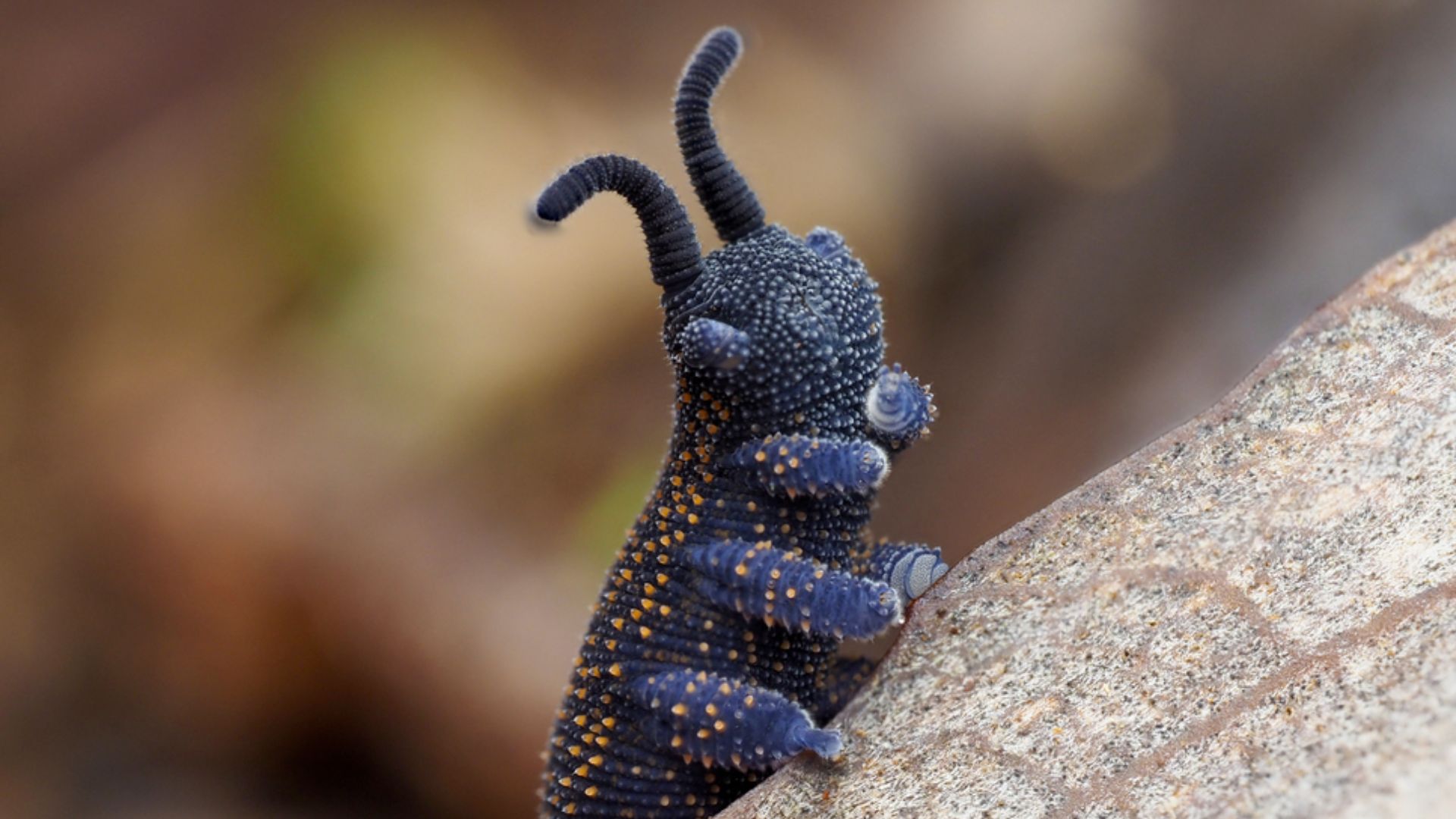When we think about creatures from the age before dinosaurs, most of us picture strange sea monsters, trilobites, or terrifying prehistoric predators. But what if I told you that one of those ancient survivors is still crawling on Earth today? Meet the Velvet Worm — a bizarre, sticky-shooting creature that’s been around for over 500 million years!

Looking for a fun, creative, and engaging way to keep your little ones entertained?

Our Digital Coloring & Activities Book is the ultimate solution! Packed with 26 pages of coloring pages, puzzles, mazes, games, and more, this printable PDF is designed to spark creativity and keep kids busy for hours.
👉 Get your’s now and make playtime unforgettable! Don’t wait – this deal won’t last forever! Use code onem50book and get 50% Off today! 🚀 🖍️ Let Your Kids’ Creativity Run Wild!
What is a Velvet Worm?
The Velvet Worm (Onychophora) is not your average bug. Despite its worm-like appearance, it’s actually in a unique category all its own, often described as a biological link between worms and insects. This tiny invertebrate has remained virtually unchanged since the Cambrian Explosion, one of the most important periods in Earth’s evolutionary history.
While dinosaurs ruled the planet for “only” 165 million years, the Velvet Worm has managed to survive for half a billion years — adapting, thriving, and quietly outliving many of the planet’s most dominant creatures.
Why Scientists Call It a Living Fossil 🔬
The term “living fossil” is used for creatures that have remained relatively unchanged for millions of years. The Velvet Worm is one of the best examples of this phenomenon. Its simple, yet highly effective design allowed it to survive massive extinction events, changing climates, and evolving ecosystems.
In fact, scientists believe that its ancestors once crawled the seafloor, but as life moved onto land, the Velvet Worm followed — adapting to forests and moist environments where it still thrives today.
Spider-Man’s Cousin?🕸️ The Velvet Worm’s Incredible Hunting Trick
Perhaps the most jaw-dropping fact about the Velvet Worm is its sticky glue-shooting ability. When it spots prey, the Velvet Worm releases two streams of adhesive slime from special glands near its head. This sticky substance instantly traps its prey, immobilizing it.
Once its victim is stuck, the Velvet Worm leisurely approaches and injects digestive enzymes, liquefying the insides for easy consumption. Sounds like something straight out of a sci-fi movie, right?
Because of this unique hunting technique, many have compared the Velvet Worm to a real-life Spider-Man!

Where Can You Find Velvet Worms?
Today, Velvet Worms can be found in:
- Tropical rainforests of Central and South America
- Australia and New Zealand
- Southeast Asia and parts of Africa
They prefer moist, dark environments where they hide under logs, rocks, and leaves. Their soft bodies make them vulnerable to dehydration, which is why they stick to damp habitats.
The Velvet Worm’s Place in Evolution 🧬
Velvet Worms are important to scientists because they represent a very ancient branch on the tree of life. Their body structure offers clues about how early animals developed legs, nervous systems, and hunting strategies.
Some scientists even suggest that the Velvet Worm may offer insight into how complex creatures like arthropods, insects, and crustaceans first evolved.
Fun Velvet Worm Facts 🔥
- 🐛 Velvet Worms have between 13 and 43 pairs of legs, depending on the species.
- 🕷️ They use hydrostatic pressure (fluid in their bodies) to move their stubby legs.
- 🧪 Their slime hardens in seconds, making it almost impossible for prey to escape.
- 👶 Some species give live birth, a rare trait among invertebrates.
Check out our Youtube channel for more Amazing creatures
How Has the Velvet Worm Survived for So Long? 🌍
The key to the Velvet Worm’s long survival lies in its:
- Simple but effective hunting strategy
- Adaptation to various moist habitats
- Low competition for food sources
- Resistance to evolutionary pressure
While many species went extinct due to changing environments, the Velvet Worm stayed in its niche, thriving in damp forests and dark crevices.
Why You Should Care About This Ancient Survivor 🦖
The story of the Velvet Worm reminds us of the incredible diversity and resilience of life on Earth. While dinosaurs have vanished, and humans are relatively new to the scene, the Velvet Worm continues its quiet existence, a tiny window into a world that existed long before us.
In many ways, studying the Velvet Worm helps us understand evolution, adaptation, and survival better than any fossil ever could.
Love Prehistoric Creatures?
If you’re fascinated by ancient life forms like the Velvet Worm, check out our exclusive “Exclusive & Awesome” t-shirt collection — perfect for nature lovers, science geeks, and anyone who appreciates Earth’s incredible evolutionary history!
👉 Shop Now
—————————————————————
Thanks for joining this wild ride. Stay curious, stay tuned, and let’s make our world brighter!
Subscribe to our channel and stay tuned for more intriguing mysteries and scientific wonders. Together, let’s uncover the secrets of the Earth and expand our understanding of this fascinating world.
Check out the latest blog and video on YouTube and learn something new today.
Attention, all readers! To deepen your understanding and stay informed on the latest news and trends, be sure to click on the link to access more informative articles.
Join the family by liking us on Facebook, or follow us on Twitter and Instagram.
If you liked this story, sign up for the weekly OneMinuteExplore features newsletter called “The Essential List”. A handpicked selection of stories from OneMinute Nature, Wildlife, Culture, Travel, Stories, and more… delivered to your inbox every Weekend.
👉 We may earn a commission from purchases made through links in this content, but it won’t affect your price. Rest assured, our recommendations are based on thorough research and genuine belief in the products. Your support through these links helps us continue providing valuable content. Thank you for being so supportive!













